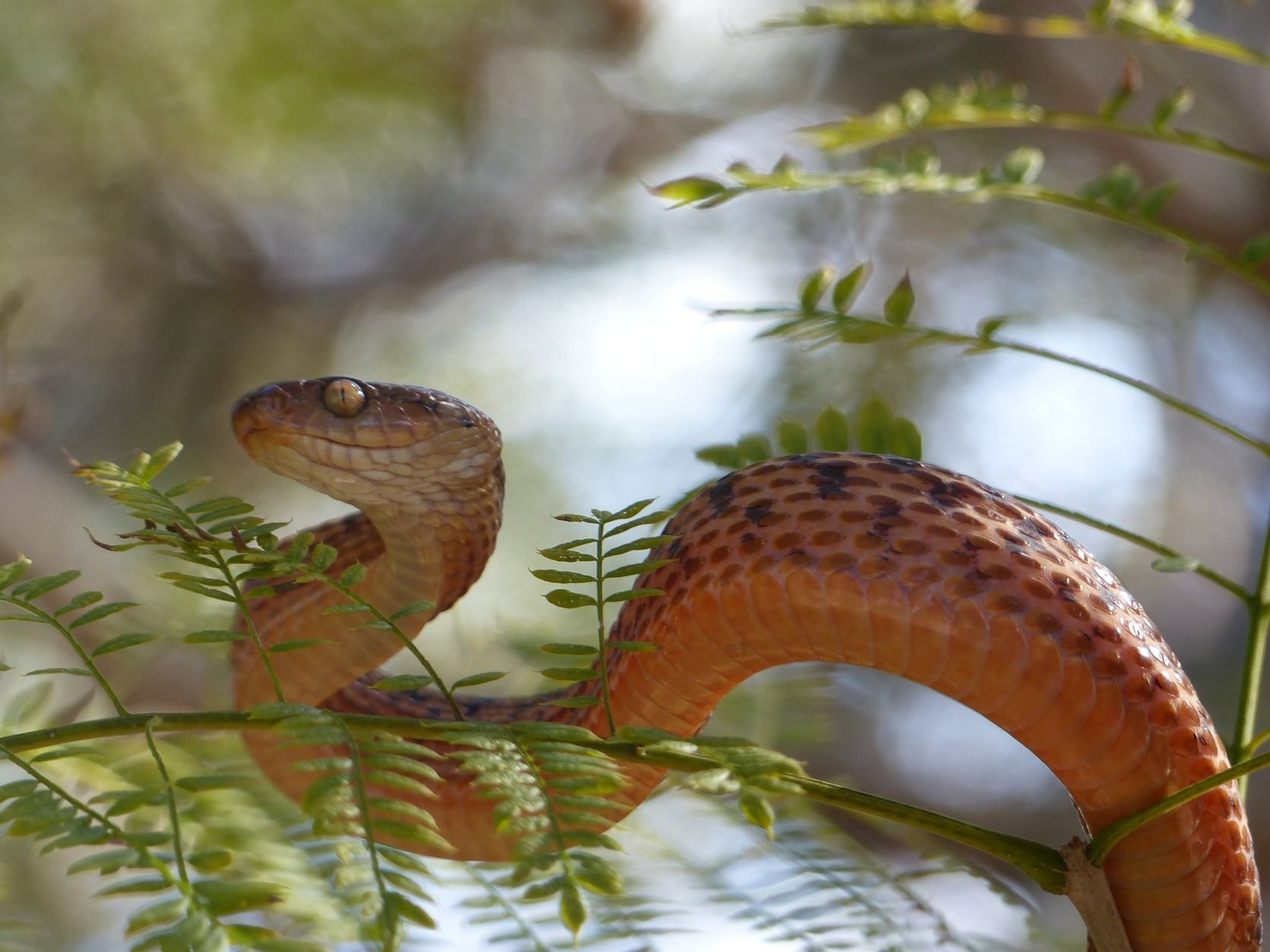Note the large eyes and the impossibly large tongue given the size of the head. A 6 month old snake strikes a defensive pose.
brown tree snake (boiga irregularis)
Other common names: Night Tiger, Dolls Eye Snake
Toxicity: Mildly venomous, reluctant to bite. The venom has little or no effect on humans.
Description: Long thin body with thin neck, bulbous head and large protruding eyes (hence the name Dolls Eye Snake). Reddish brown body with dark irregular bands. The underside is a very distinctive salmon pink colour. Can grow to 2 metres in length though most common at half this size in the Tweed.
Due to their brown colour they are commonly incorrectly labelled as a Brown Snake. The Brown Tree Snake fangs are at the back of the mouth. They are in the Colubrid family of snakes that includes the Green Tree Snake and Keelback.
General habits: The Brown Tree Snake is a strong climber. It hunts nocturnally in trees and rock outcrops, catching sleeping prey.
Diet: Lizards, frogs, mice, rats, small birds, eggs.
Locally: The Brown Tree Snake is found in all locations in the Tweed and is the second most commonly encountered snake after the Coastal Carpet Python. They have adapted well to the urban environment and are found curled up in cupboards, on verandah rafters or heard sliding in the roof at night. Most commonly encountered at night when they are active. Almost all night-time calls to a brown snake in the house will result in a Brown Tree Snake being caught. Brown Tree Snakes are adept at getting into bird aviaries. Once identified as a Brown Tree Snake, a large percentage of people are happy to leave it in residence on their verandah.
Reproduction: Lays between 4-12 eggs in a sheltered position such as a hollow log or rock crevice.
Adult being released into the bush.
Brown Tree Snakes have a very gentle nature
Juvenile Brown Tree Snakes are quick to form a defensive ‘S’ and follow up with a big open mouth lunge if they feel threatened; all bluff but effective nonetheless.




